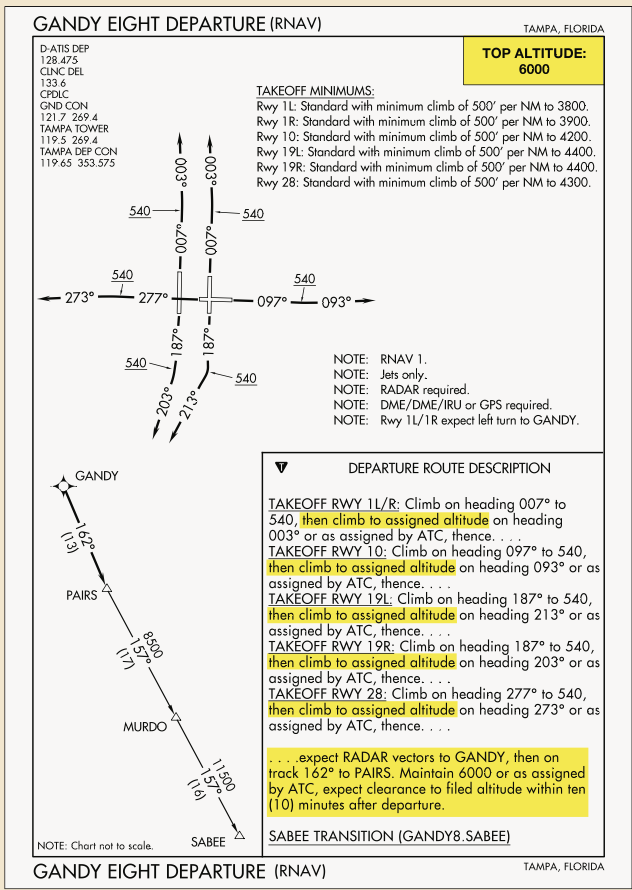There’s only so much airspace. Without minimizing separation requirements—as was implemented with reduced vertical separation minimums, or RVSM, in certain airspace—there’s no way to squeeze more aircraft into a finite area. At the same time, there are only so many ATC facilities and controllers staffing them. Anyone who has flown down the U.S. East Coast lately probably has seen how the Jacksonville ARTCC is often saturated to the extent it forms an ATC bottleneck.
Meanwhile, more and more aircraft of all sizes and performance capabilities are plying the airways, many of them all wanting to arrive at LaGuardia at 1700 local. Increased frequency congestion is one outcome, as anyone trying to get VFR flight following near a major terminal on a good-weather Friday evening likely can attest. Some things have to give.
Enter the climb/descend via clearance, an ATC shorthand designed in part to minimize the aforementioned frequency congestion, simplify routings and cockpit automation, and more efficiently route aircraft to and from terminal airspace during their initial and final flight phases. Along the way, climb/descend via clearances have generated cockpit confusion and altitude busts. That’s to be expected in a dynamic ATC system, but can be cold comfort to affected crews.
A relatively uncomplicated SID, the Gandy Eight, reproduced at right with altitude information highlighted, serves southbound departures from the Tampa (Fla.) International Airport (KTPA). “Relatively” and “uncomplicated” are doing a lot of work here, though, and are highly dependent on traffic, weather and ATC workload.
This SID clearly features a “top altitude” of 6000 feet msl, as highlighted in the upper right corner. Expect climb via SIDs to include this. Some of the confusion generated by “climb via” clearances comes from the simple fact that 6000 feet is not a viable cruising altitude for a jet transport, and somewhere along the line, ATC needs to provide an additional clearance.
On the Gandy Eight, there actually are four altitudes to which crews need to pay attention. The first is 540 feet msl, which is the altitude aircraft must reach before turning to the heading specified in the SID or as assigned by ATC.
The second is the minimum climb rate, which is not highlighted at right but is listed in the takeoff minimums list in the chart’s upper right corner, below the top altitude. The third altitude is the top altitude itself.
The fourth one will be assigned by ATC via a new clearance and constitutes at least an intermediate altitude to which the flight should climb before reaching cruise.
APPLICATION
Although this article focuses only on departure procedures (DPs), many of the same concepts apply to arrivals. Regardless and importantly, climb/descend via clearances only apply to standard instrument departures (SIDs) and standard terminal arrivals (STARs). They’re not applicable to obstacle departure procedures (ODPs) or instrument approach procedures (IAPs), both of which have other ways of presenting appropriate altitudes to be flown.
Ultimately, a SID or STAR is another form of ATC shorthand that defines how an aircraft gets to/from a terminal area and the en route environment. One characteristic SIDs and STARs share is that they’re charted, as dissected on the sidebar below. Another characteristic is more basic: Both SIDs and STARs provide lateral and vertical guidance. In the case of a SID, the “climb via” clearance references the published altitudes with the idea of relieving ATC from communicating that information and tying up the frequency.
Perhaps less important but still relevant is that “departure procedures” is a top-level term. Both SIDs and ODPs are published departure procedures; one (the SID) is charted while the other isn’t. An additional difference is that the charted SID provides both precise lateral and vertical guidance while an ODP may not.
AN ABBREVIATED CLEARANCE
According to the FAA’s Aeronautical Information Manual (AIM) at paragraph 5-2-9, covering departure procedures, “Climb via is an abbreviated clearance that requires compliance with the procedure lateral path, associated speed and altitude restrictions along the cleared route or procedure. Clearance to ‘climb via’ authorizes the pilot to:
“• When used in the IFR departure clearance, in a PDC, DCL or when cleared to a waypoint depicted on a SID, to join the procedure after departure or to resume the procedure.
“• When vertical navigation is interrupted and an altitude is assigned to maintain which is not contained on the published procedure, to climb from that previously-assigned altitude at pilot’s discretion to the altitude depicted for the next waypoint.
“• Once established on the depicted departure, to navigate laterally and climb to meet all published or assigned altitude and speed restrictions.”

The accompanying article is based on the Aeronautical Information Manual (AIM) and its definitions/explanations. A few more caveats may apply, depending on the SID, as described in Air Traffic Control, FAA Order JO 7110.65Z (ATC), the controller’s “bible.”
Importantly, the climb via clearance also implies more than just a top altitude: A SID may also have crossing-altitude or speed restrictions at one or more fixes along its route. According to an online forum post by John Collins, a recognized resource on avionics and ATC procedures, “At one point all SIDs used the new Climb Via phraseology, but it was deemed confusing for SIDs without crossing restrictions, so the clearance phraseology was limited to just those SIDs that have crossing restrictions.”
SOME CAVEATS APPLY
The foregoing AIM excerpt is the bold print. Some fine print follows. One caveat is, “Pilots cleared for vertical navigation using the phraseology ‘climb via’ must inform ATC, upon initial contact, of the altitude leaving and any assigned restrictions not published on the procedure.” In other words, after a handoff, update the new controller on your actual altitude and any previously cleared restriction.
Another caveat states, “If prior to or after takeoff an altitude restriction is issued by ATC, all previously issued ‘ATC’ altitude restrictions are canceled including those published on a SID. Pilots must still comply with all speed restrictions and lateral path requirements published on the SID unless canceled by ATC.” This should be self-explanatory but often creates confusion. In essence, if an ATC clearance includes an altitude, that value overrides any mandatory altitude published in the SID.
When considering all DPs, it’s also important to understand that, as the AIM states, “Altitude restrictions published on an ODP are necessary for obstacle clearance and/or design constraints. Crossing altitudes and speed restrictions on ODPs cannot be canceled or amended by ATC.” In other words, you’re unlikely to get a clearance to a lower altitude while flying an ODP, thanks to obstacle clearance concerns. The same is not true of a SID, especially one which has a top altitude in the teens or flight levels.
Of course, not even the AIM can anticipate all variations and circumstances. Accordingly, the FAA has published a frequently asked questions (FAQ) document to assist crew understandings. It is available in Adobe’s PDF format free for the download on the FAA’s web site at tinyurl.com/SAF-FAQ.




